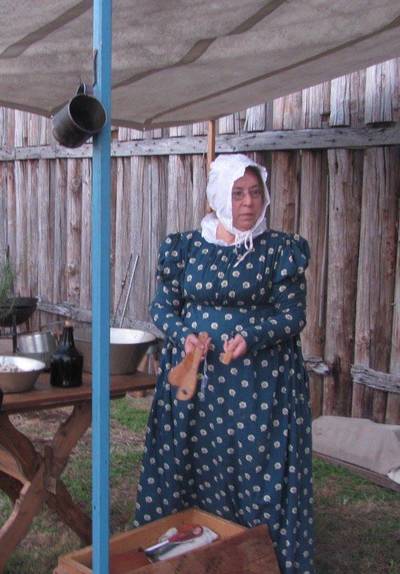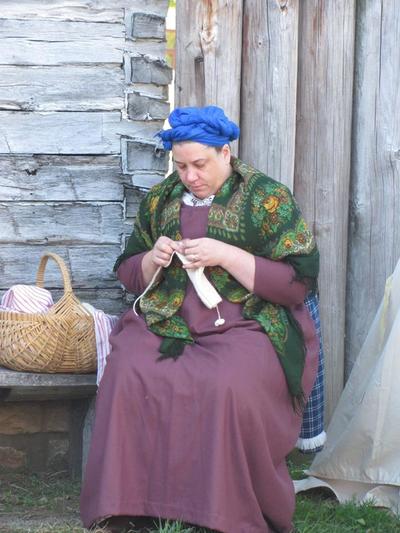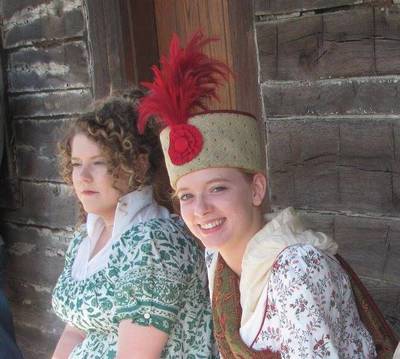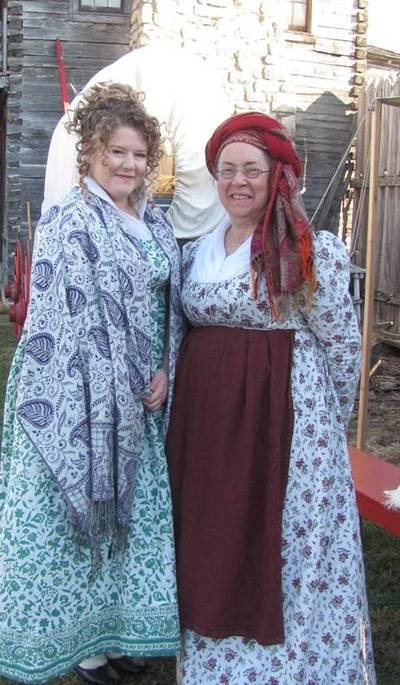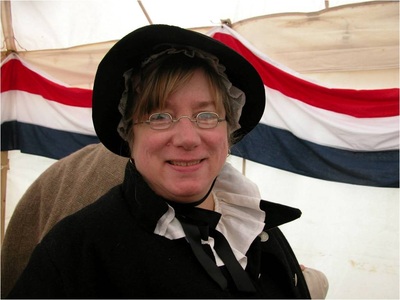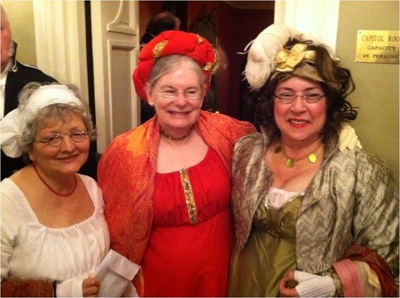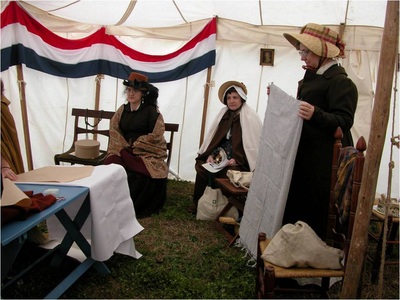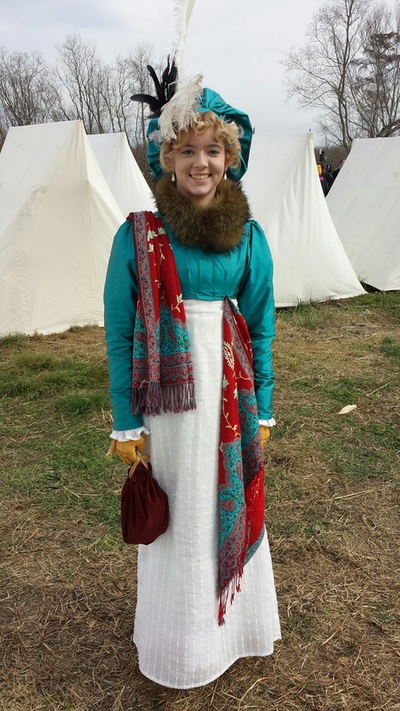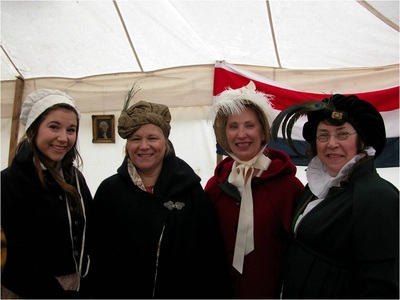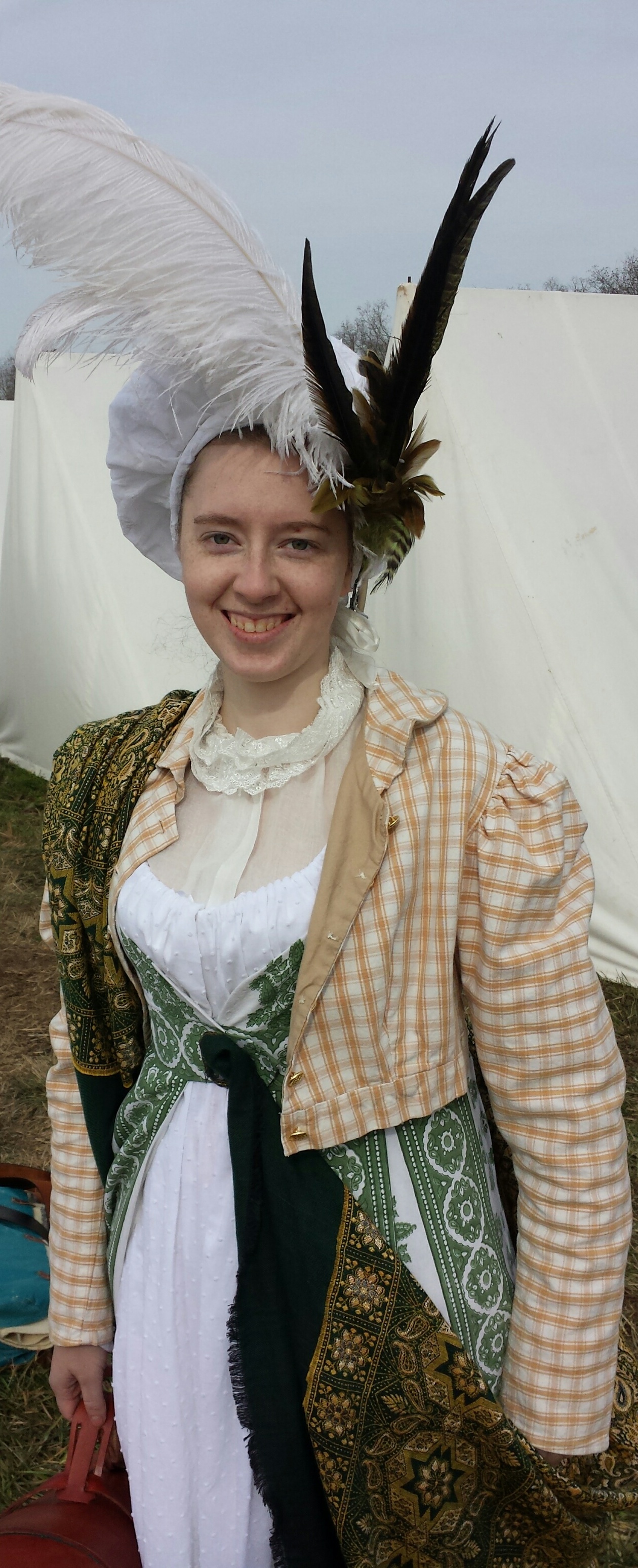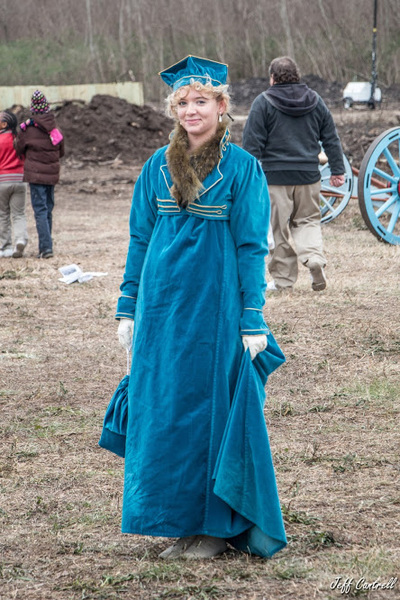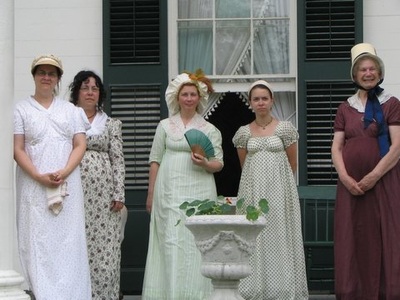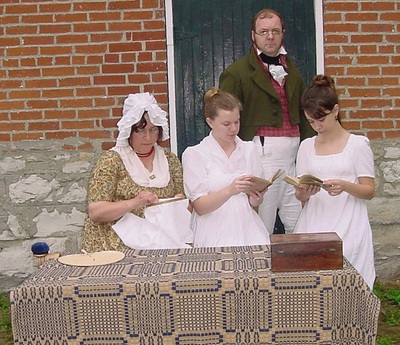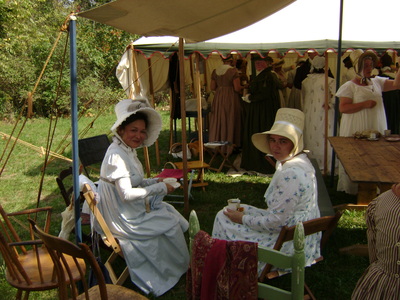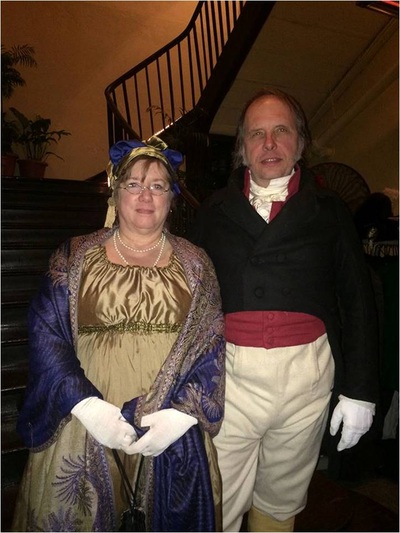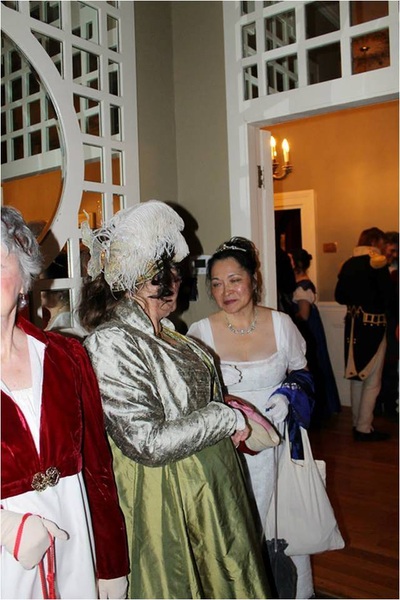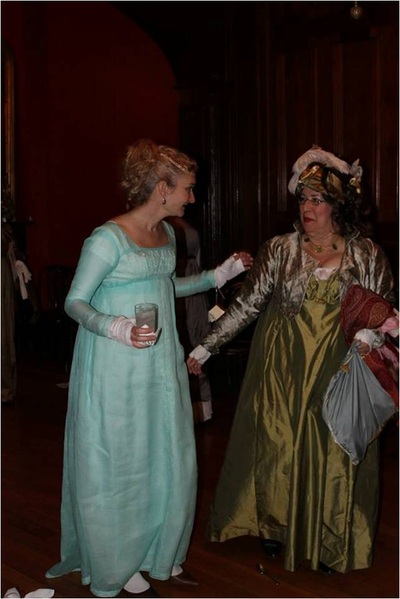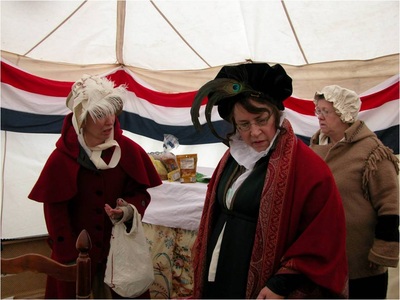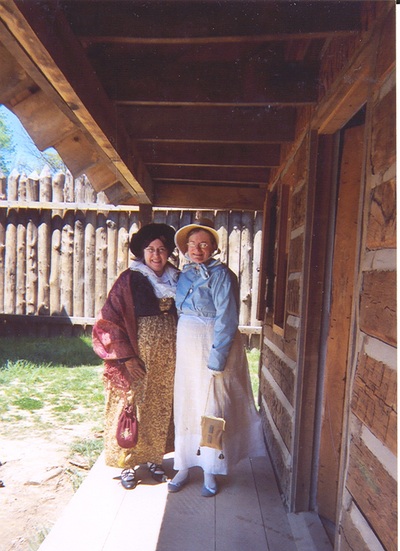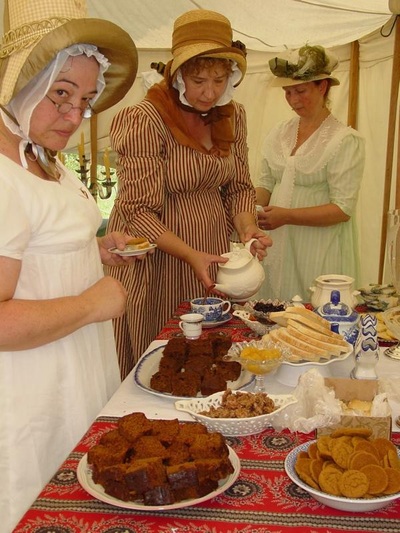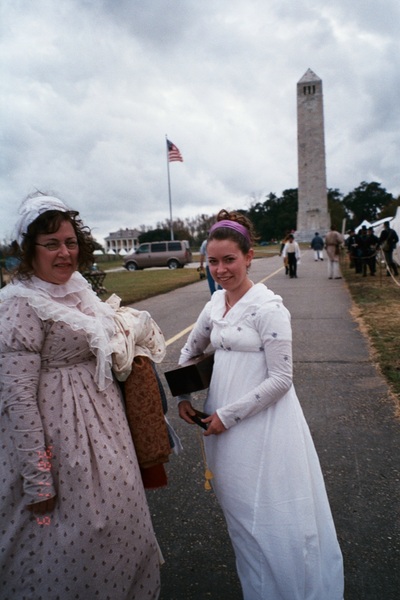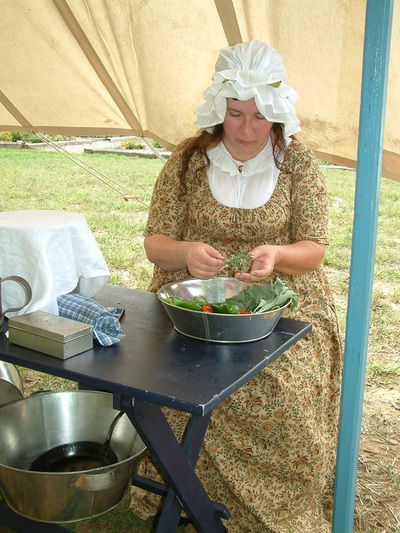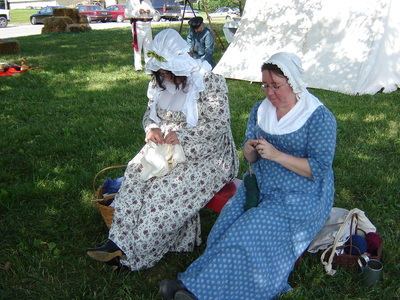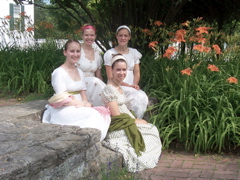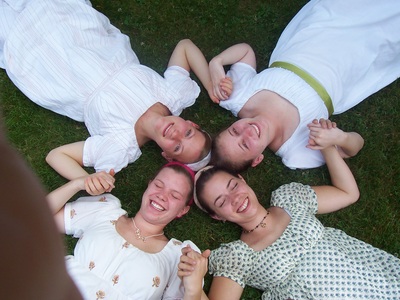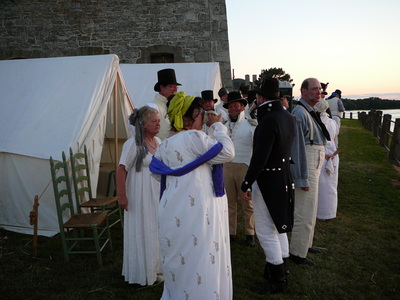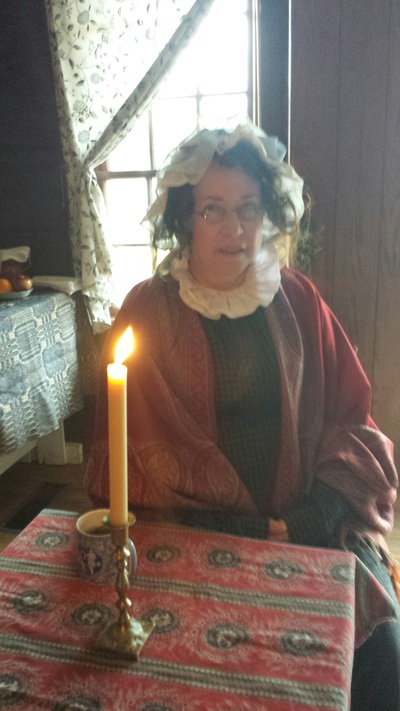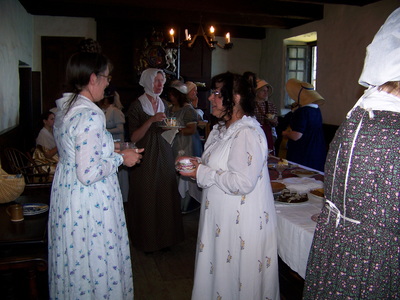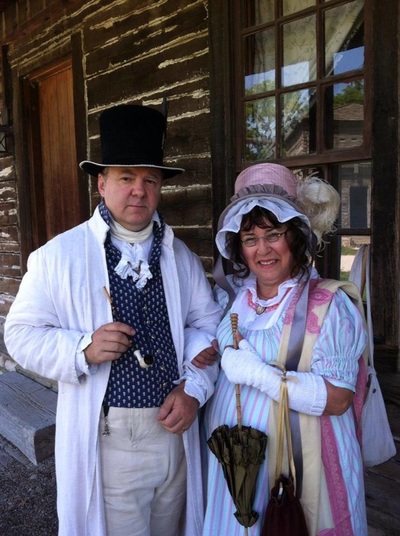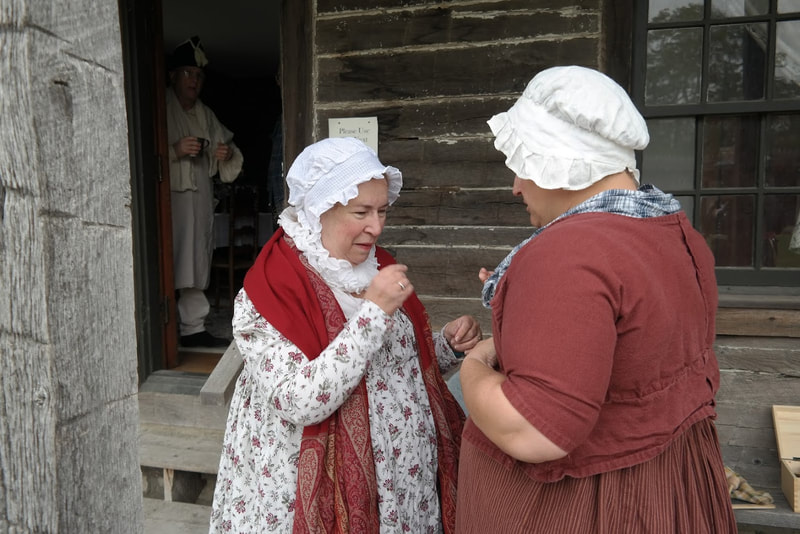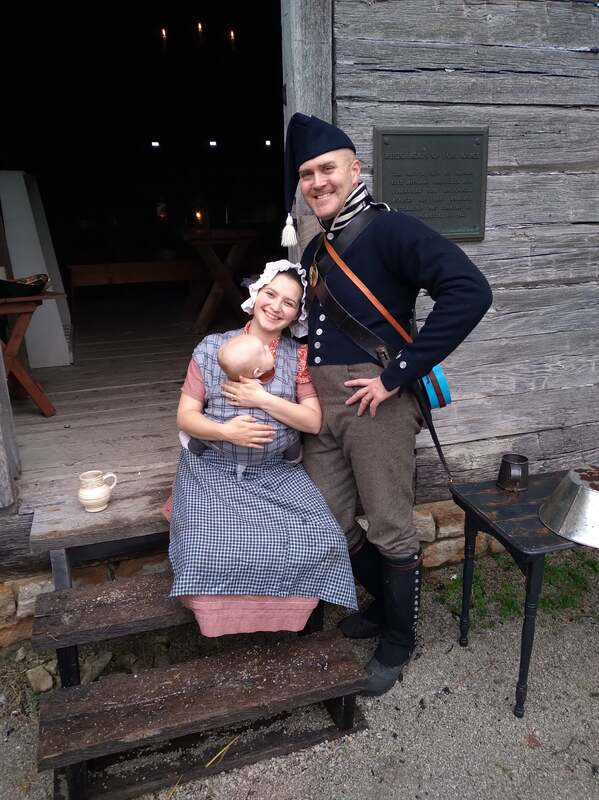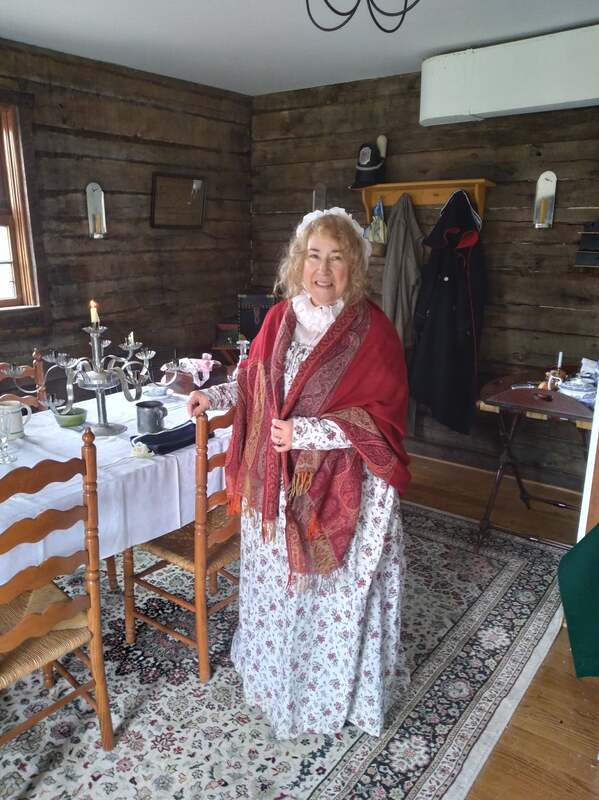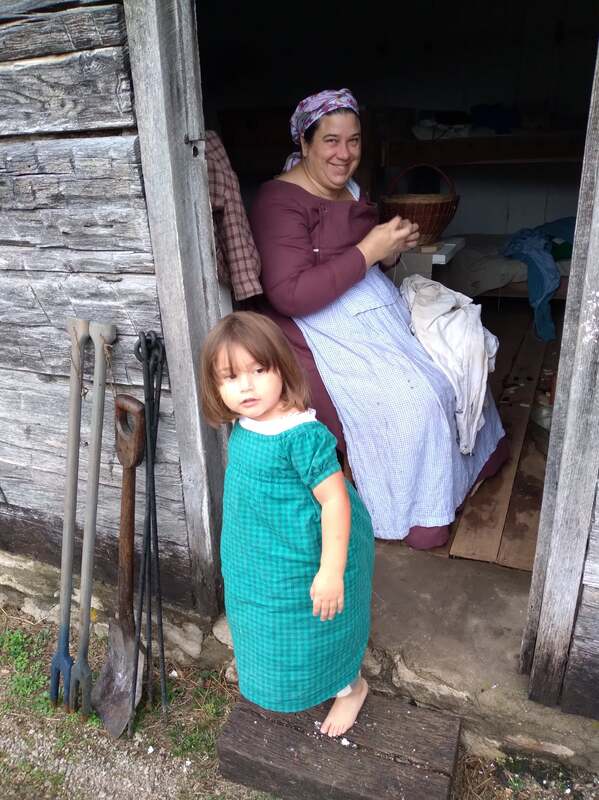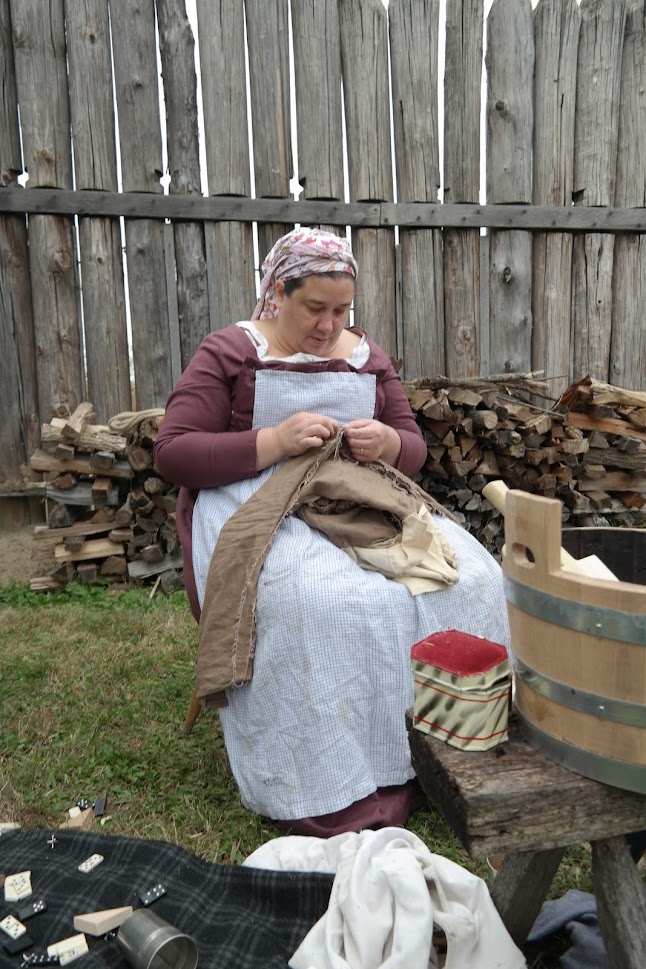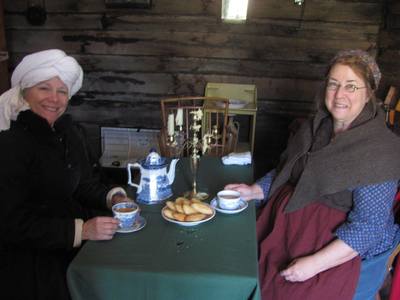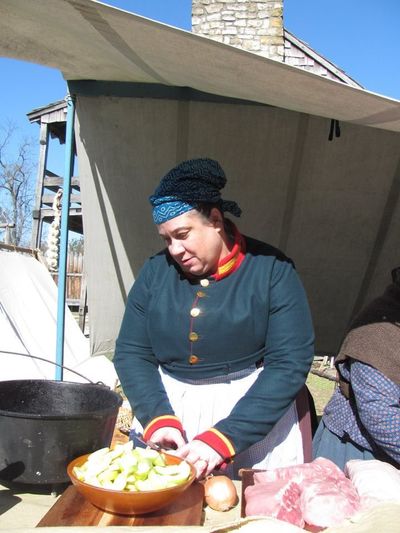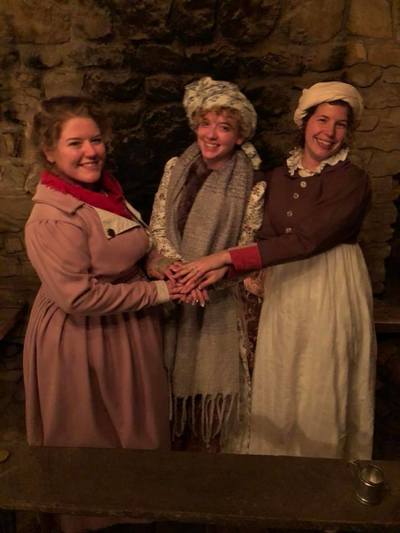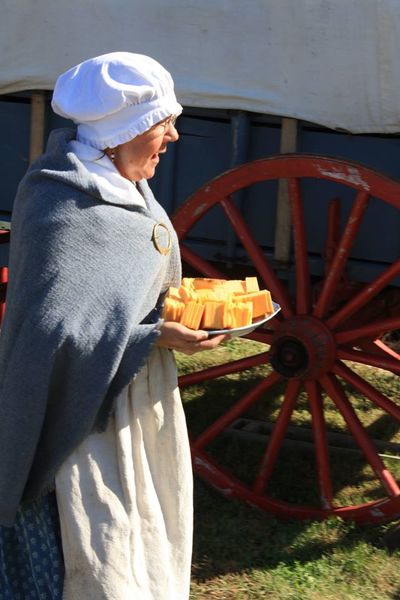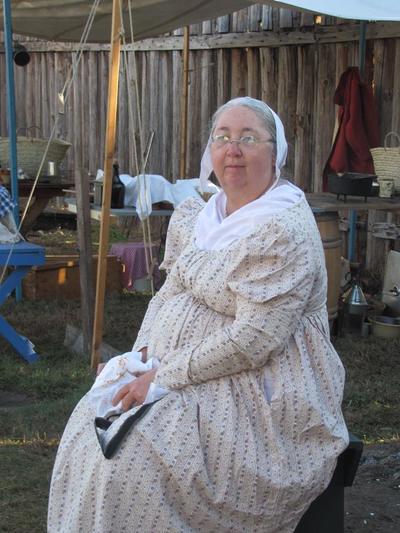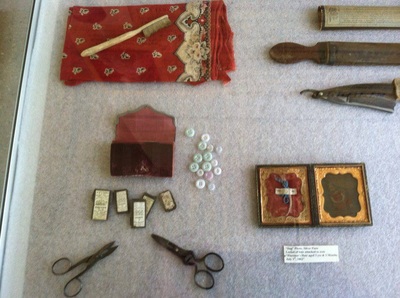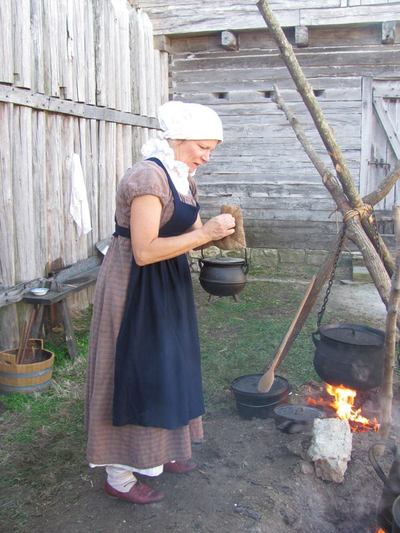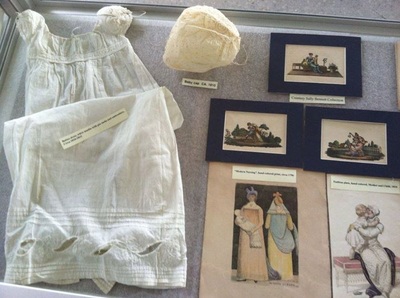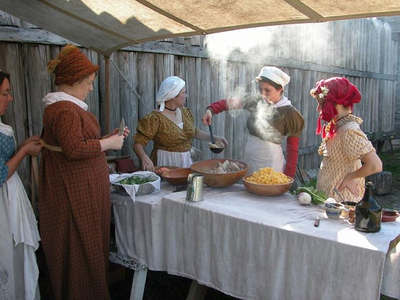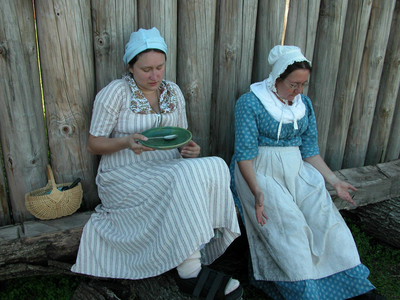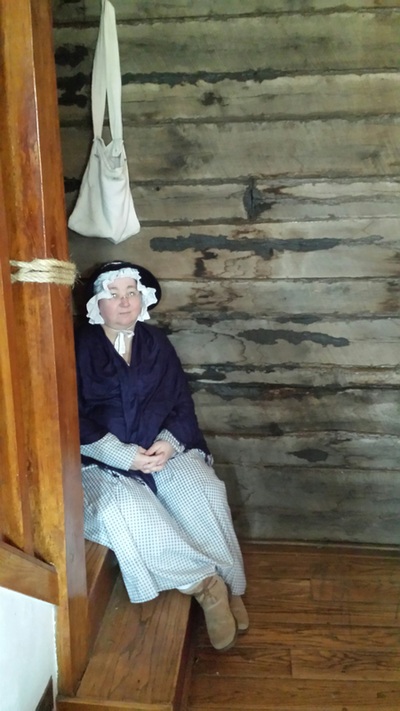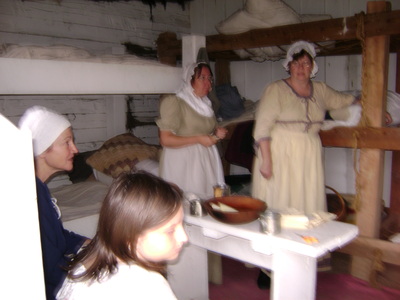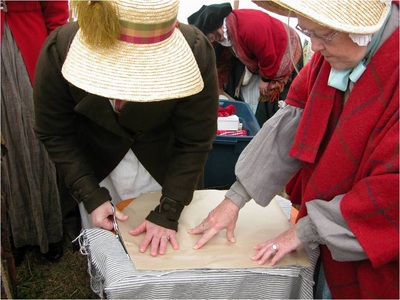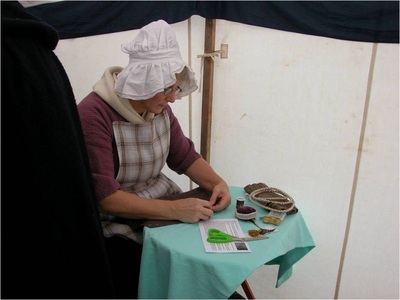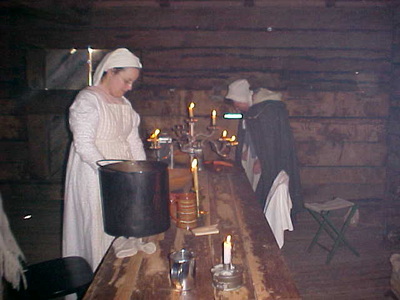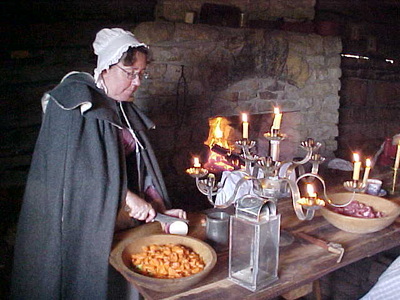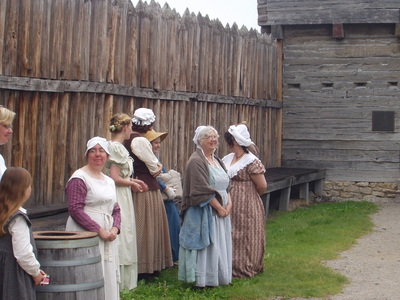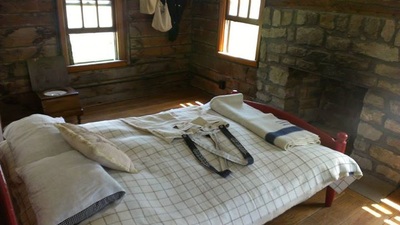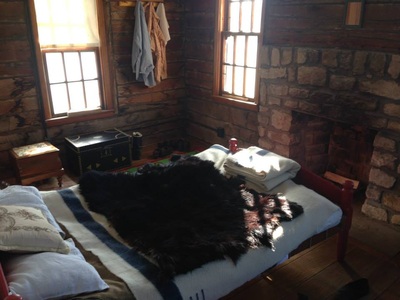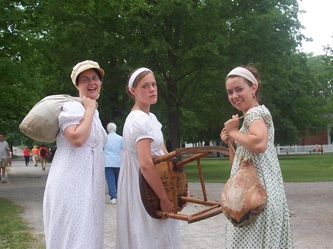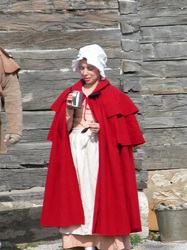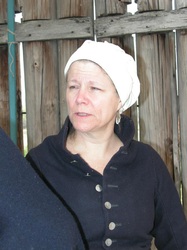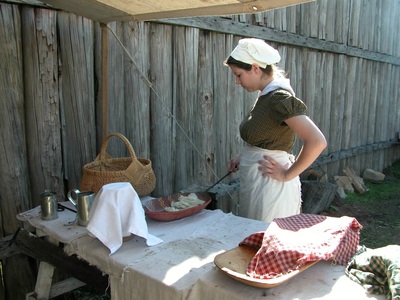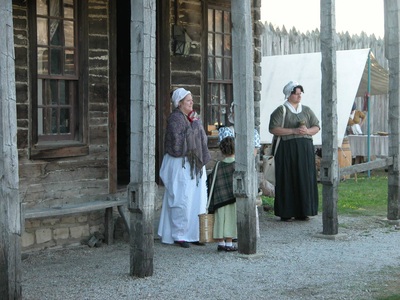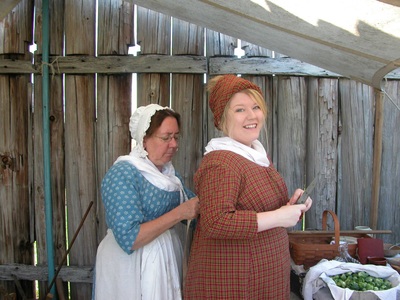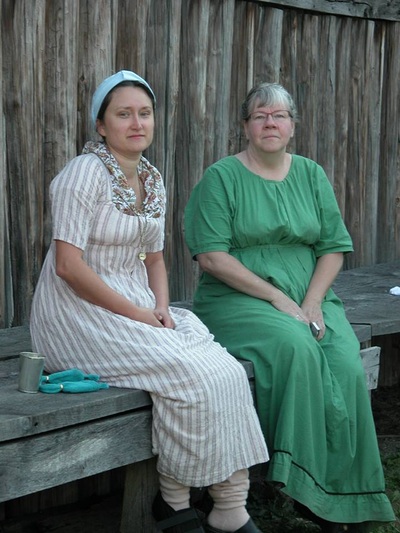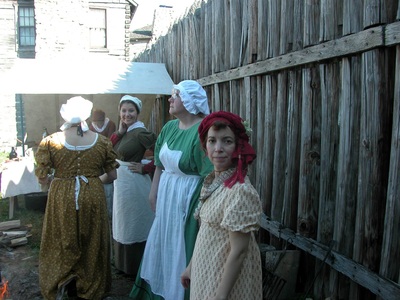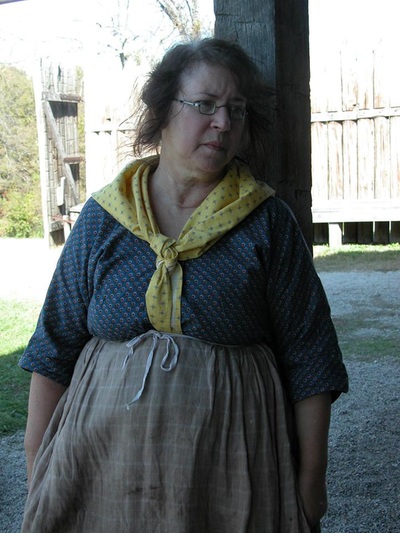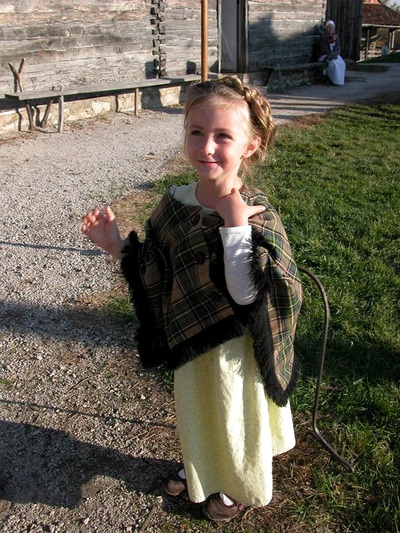Officers' Ladies by Sally Colford Bennett
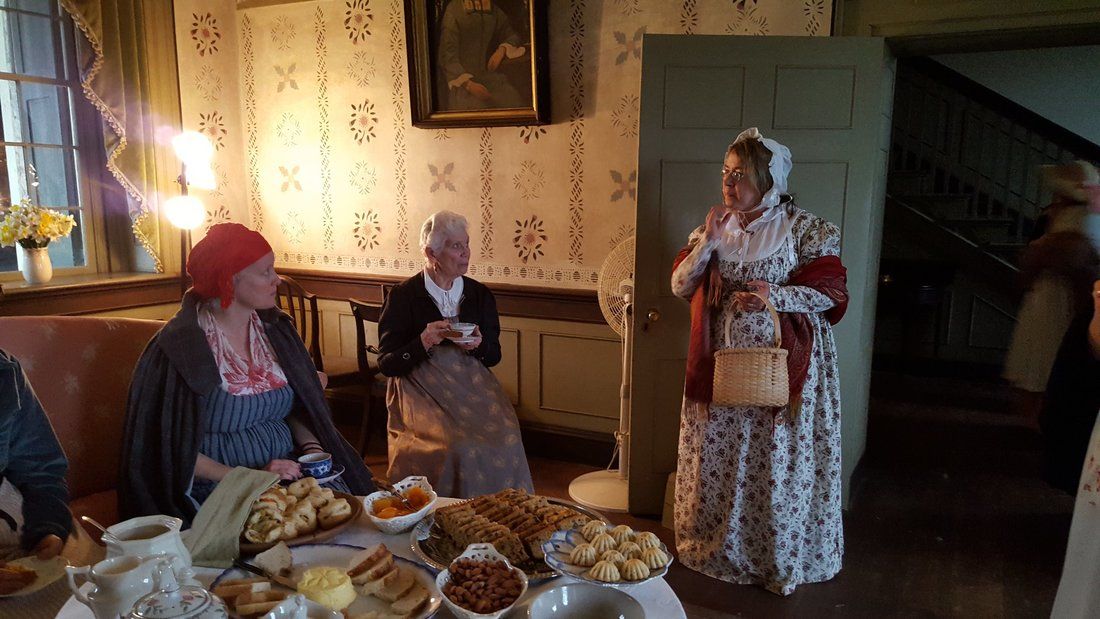
Cragfont, 2018, Ladies tea hosted by Mrs. Bennett, far right.
The wife or daughter of an officer was a middling class lady. She would have been educated, most likely having attended a female academy where she learned needle arts (including embroidery, tambour work, drawing, and painting), domestic arts (sewing, cooking, knitting, marking or putting initials on clothing, etc.), and education in the subjects of composition, geography, history, math, natural and moral philosophies, to name a few. She might also have attend a dancing academy to learn to dance, which would also enhance her posture and deportment.
Many officers chose to take their wives and families with them to the westward country (which included the Old Northwest, that include Ohio, Indiana, Illinois, and the Louisiana Territories, such as Missouri) or to the southern territories (Georgia, Alabama, Mississippi, and Tennessee as well as the southern half of Louisiana). These isolated places posed hardships for raising a family as well as having some sense of a social life, but having a family near was a boon for an officer ,who would otherwise face loneliness or be drawn into taking on a mixed blood or a Native American woman for companionship even though these illicit relationships were forbidden by military regulations.
For the wife who accompanied her husband westward, she would face the loneliness of female companionship. The officers' wives and daughters spent their days working on sewing for themselves, their children, and infants, from undergarments to dresses and clothing for husbands from cravats to shirts to drawers; knitting; writing letters back home to family, to other officers' wives at other forts if they knew any; keeping a diary or journal; and reading, particularly novels and history. Recreational activities might include taking walks, collecting wild flowers, and horseback riding (side saddle, of course).
|
|
Women of the Company by Sally Colford Bennett
Washerwomen: from about 1800 to 1815, this is the most commonly used term for women who did laundry in the historic record of this era, not laundress. The duties of the washerwoman was to wash the clothing of the soldiers. They earned .12 for every 12 pieces they washed when soldiers supplied the soap and .18 "without soap." Washer women or company tailors could eared .33 for making a "Ruffle shirt" or a "A plain shirt, (soldier) 20 cents." Hospital Matrons: this term should not be confused with nursing care as we now know it. The hospital matron was not a nurse. Belle Fontaine Aug 29 1807 Morning Orders Margaret White not being a suitable person to attend the sick in the Hospital the Colonel directs that she be turned out, and Kitty Goodjer is appointed in her Room." |
